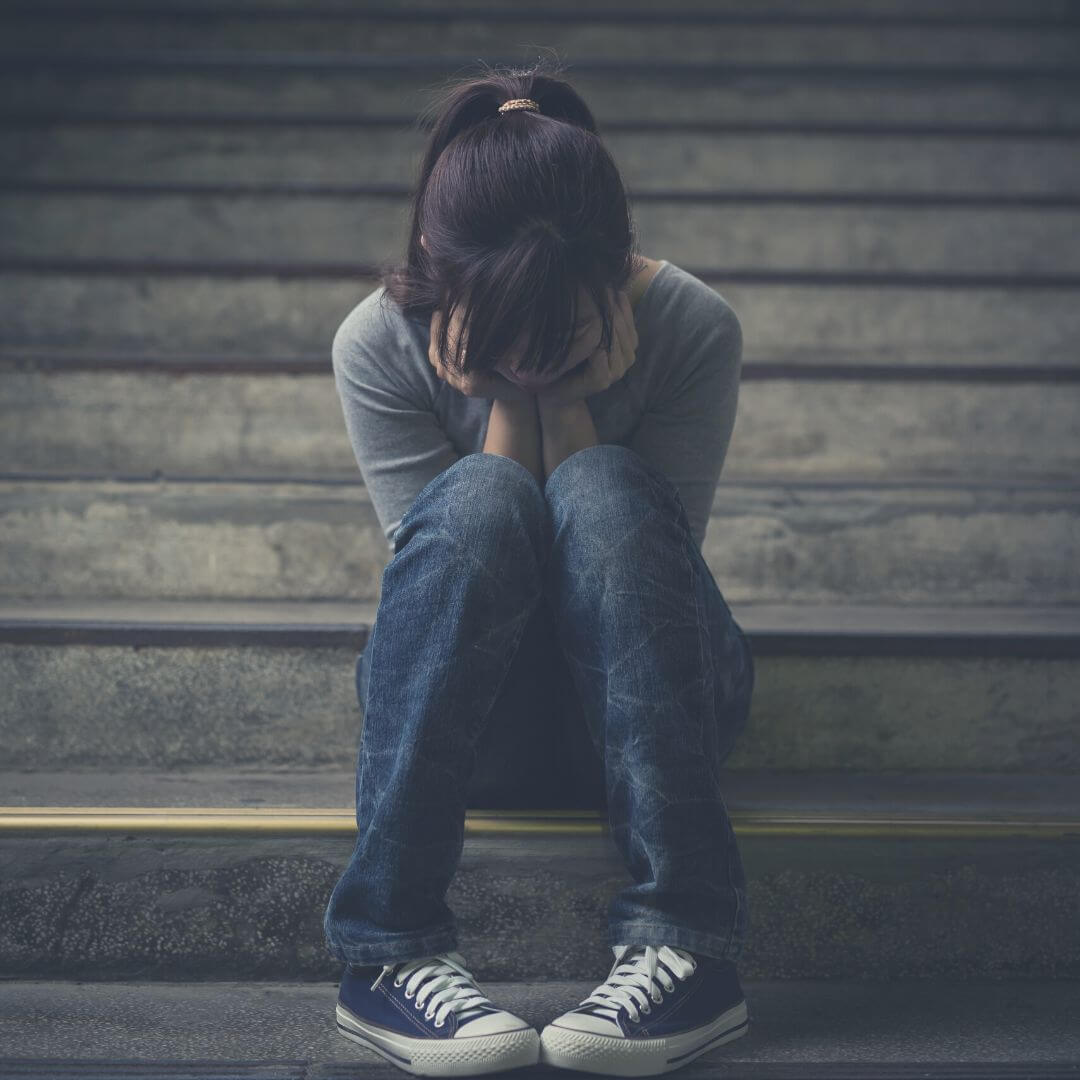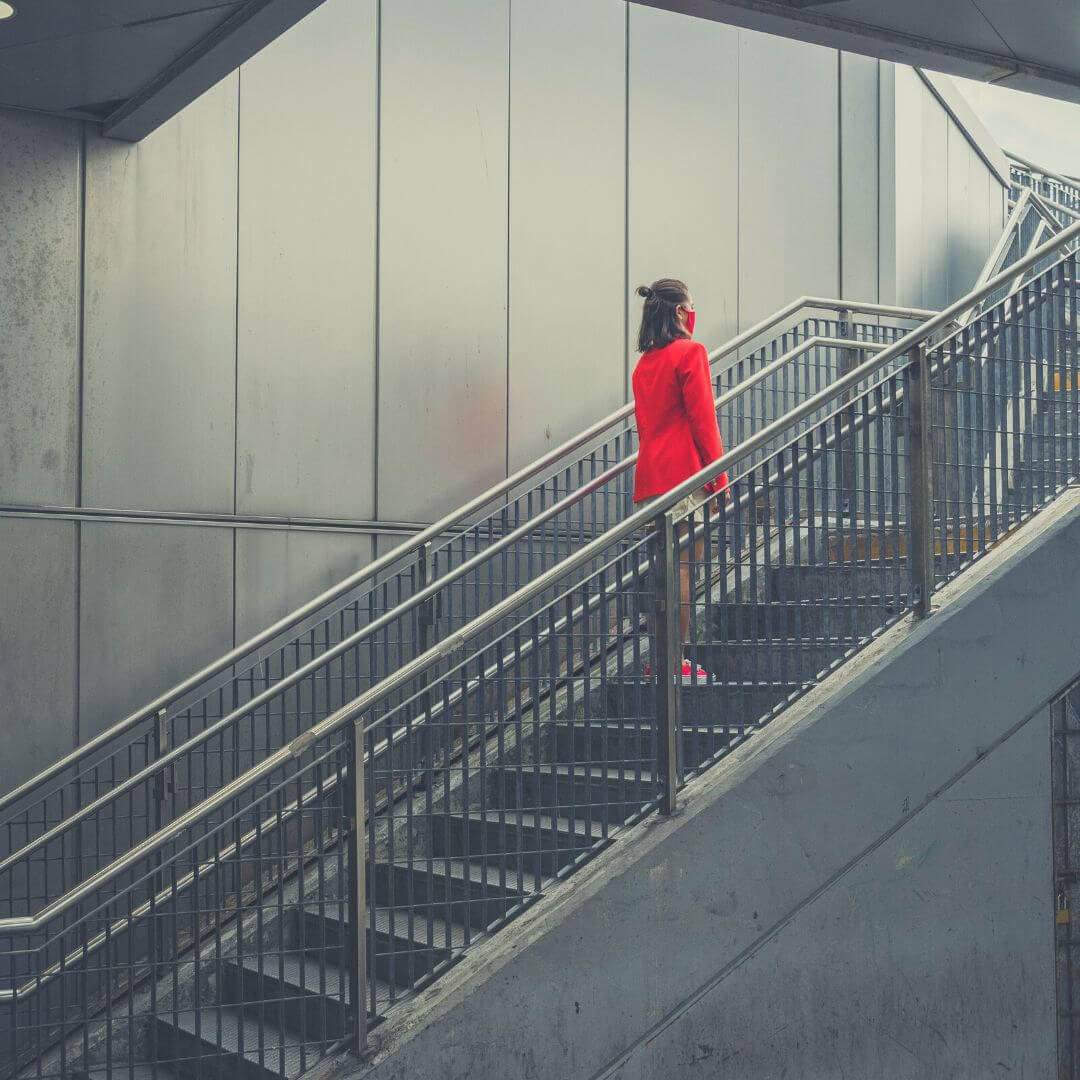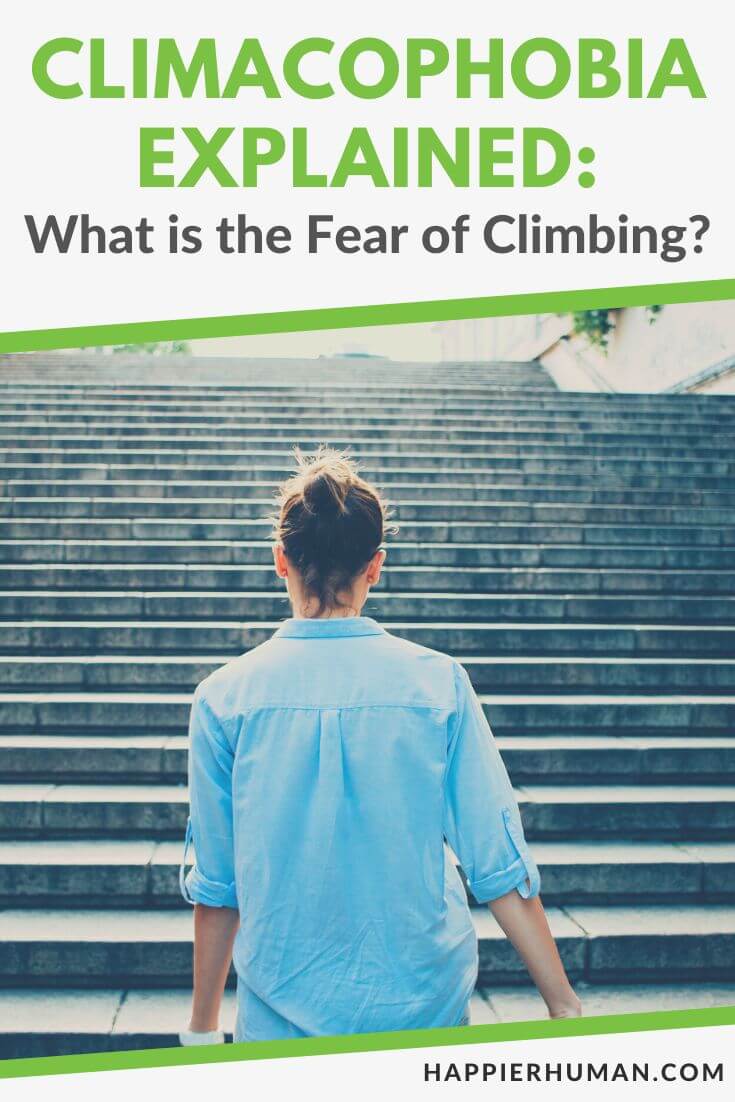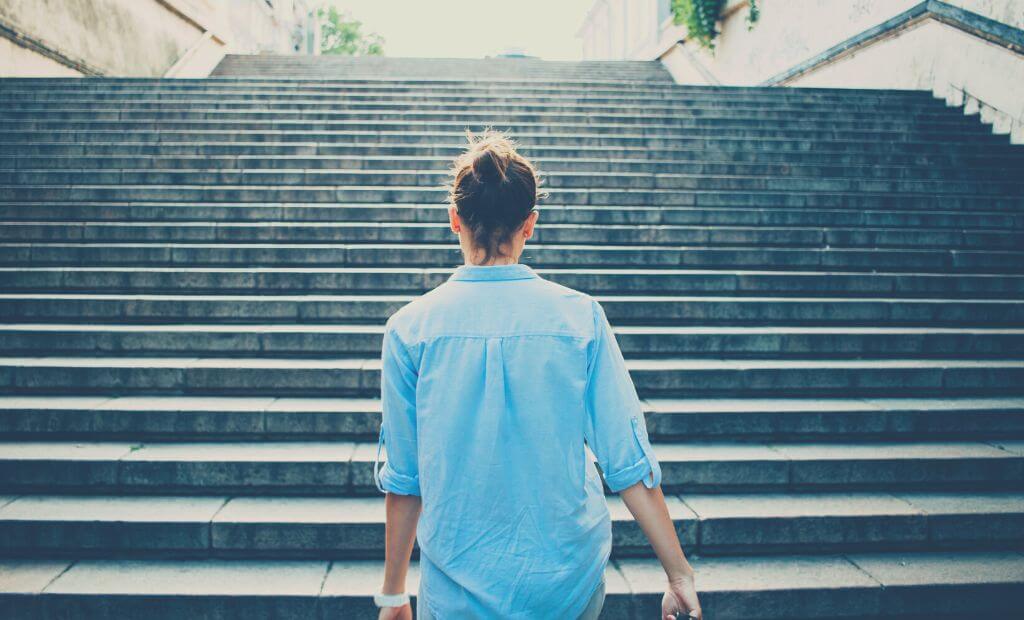There might be affiliate links on this page, which means we get a small commission of anything you buy. As an Amazon Associate we earn from qualifying purchases. Please do your own research before making any online purchase.
It was completely unplanned—getting stuck on the top floor of my employer’s 25th story building when the elevator broke. While all of the other employees were happy to descend the flights of stairs, I simply couldn’t walk down nor could I climb into the fire-department’s emergency ladder bucket to be lowered to the parking lot outside.
I was stuck.
I had a fear of climbing down and climbing up… which I later discover was called climacophobia. Wish I had known that before feeling trapped.
Five hours later, the elevator was fixed, and I huddled in a corner as I descended to the lobby. A therapist counseled me the next day, and we discovered that I suffered from a debilitating phobia.
What Is Climacophobia?
Climacophobia is an irrational fear of climbing. While something may have happened to trigger this fear, such as falling down some stairs as a child or stumbling on steps when accepting an award, you can also suddenly develop a fear of climbing (for no apparent reason).
You can be forgiven for having never heard of climacophobia. After all, it’s not a very well-known fear. People may admit to suffering from the fancy phobias that movies are made of, like claustrophobia (a fear of small spaces) and arachnophobia (a fear of spiders), but a fear of climbing is poorly understood.
My colleagues asked me if it was like a fear of heights, and while I don’t like heights, I can look out a window of a tall building without feeling anxious. It’s climbing up to that building or even walking up a few steps that really gets me.
A similar fear would be bathmophobia, where you are scared of the actual steps or inclines, not the act of climbing.

I know it’s not rational to be scared of climbing. We are made to climb up and down obstacles, but I feel anxious whenever I have to walk up a steep road, or if I have to use the steps to the second level at my local shopping center.
I’d rather walk up the disability ramp than choose the steps, as each step climbed is torture!
Any inclined movement tends to make me feel anxious, and it’s so bad that I can often see it influencing my life and holding me back.
Symptoms of Climacophobia
If you’re wondering just what indicators are signs you have climacophobia, it’s not as simple as saying you are afraid of heights and leaving it at that.
Yes, climacophobia does get worse when there’s a significant height involved, but it’s actually the climb up or down that scares me.
Here are a few symptoms that you may have seen in yourself if you fear climbing too:
Climbing Makes You Anxious
One of the main symptoms of any phobia is that being in that specific fear-driven situation causes anxiety. All of the symptoms of anxiety crash down when my fear of climbing is triggered. I feel sweaty, trembling, hot, and cold at the same time, my ears roar, and I feel lightheaded.
If you’ve ever been anxious, you know what an episode of climacophobia essentially feels like. It’s anxiety on steroids.
Loss of Muscle Tone and Control
When I am stuck in an episode of climacophobia, I feel weak. There is more than the usual amount of muscle trembling that would go with anxiety. I feel like I have melted into the floor, like my muscles turned to jello.
Of course, with weakness comes trembling, rapid breathing, and other psychosomatic symptoms like dizziness, loss of balance, and fever. Your body expresses what your mind fears. Each step climbed prompts more physical abnormalities to appear.
And, since I have to climb but can’t, I experience the freeze response to my fear. Like when I was on the top floor of the building, I simply couldn’t move.
Illogical Reasoning
An episode of climacophobia need not be related to some serious event or massively scary steps like those that ascend to the temples in the Far East. Instead, a simple step up to your front door can be enough to cause your fear of climbing to kick in.
Yes, I know, it’s illogical, but it’s also real.
Your mind can’t reason with that fear, and even more painful is that you consciously know its super silly to be scared of climbing up one tiny step. However, your whole body reacts with fear to this simple task.
Panic Behavior
If you’re afraid of something, you should be careful when you have to do it. Yet, with climacophobia, you end up rushing into the situation you fear. Perhaps this is the equivalent to shutting your eyes as you jump out of an airplane when you have a fear of heights.
When I was stuck at the top of the building, I had a moment where I wanted nothing more than to just leap over the side, just so I could be safely on the ground. Of course, leaping would not have been safe and it would not have resolved my fear.
People with climacophobia may rush up steps or leap down steps, and they may do strange and dangerous things to get the “climbing” over with. This panicked behavior can be dangerous to themselves and to others.
Fear and Shame
Perhaps one of the worst symptoms is a constant state of anxiety and fear. I was utterly mortified by my episode of being unable to climb down the steps at work. Shame walks hand in hand with fear, and it’s a lonely road.
Fearing to climb, you also fear what others may think of your fear and your disability. Soon, you may become ostracized in your community, and you may intentionally self-isolate to avoid having others see your fear.
Causes of Climacophobia
You may wonder what caused my fear of climbing. Did something happen? While this can be how a phobia such as climacophobia starts, it need not be a single event or negative memory involving climbing.
Honestly, I can’t recall ever climbing or falling and suffering a negative event because of it. Nobody teased me, and I didn’t sustain any serious injury in a climbing accident.
There are a few causes for climacophobia that may involve a bad memory, such as watching someone fall down steps in a movie or seeing someone else tumble down steps (vicarious learning).
Even a near fall can trigger the onset of climacophobia. Your brain, in an attempt to protect you from the threat (which is what it sees fear as), will convince you of the rest.
How to Treat Climacophobia
Treating climacophobia ended up being a combined effort. I would have to combine replacing negative fears about climbing with positive ones, and I’d have to get good at it so I didn’t disbelieve my own alternative thoughts. Using mindfulness and affirmations, I have been able to begin mastering my fear of climbing.
I would also have to deal with my anxiety to prevent it from further fueling my fear of climbing.
Cognitive Behavioral Therapy (CBT)
CBT has gained a lot of popularity in therapy circles due to the effectiveness of retraining your brain to intentionally think happy and positive thoughts instead of the negative and destructive thinking that goes with phobias.

When you can rewire your brain to respond in a more positive way, you will begin to remove negative and anxious thinking patterns. This could be a grounding experience.
Anxiety Reduction
A phobia likes to keep company with anxiety. Therefore, if you can reduce your anxiety, you will be less likely to have a panic attack.
Methods such as meditation, yoga, and herbology can all help to reduce anxiety, which would ease your fears.
Medication for Anxiety
When your anxiety levels are elevated, you will suffer a loss of logical and critical reasoning, which can lead to higher anxiety, which leads to a destructive loop of fear and anxiety.
Using medication to relax your body and ease your mind will help alleviate anxiety symptoms. Anxiety that has become intrusive in your life can be treated by consulting with your physician to prescribe antidepressants, or in extreme cases, anti-psychotics.
Exposure Therapy
My counselor even suggested I try exposure therapy, where I force myself to climb some steps every day. Starting with a few steps to eventually reaching a flight of stairs, I would be able to make the fear seem less scary.
Final Thoughts on Climacophobia
Fear need not lead to cocooning yourself and hiding from the world because a few steps scare you. We all have something we’re afraid of, and it’s nothing to be ashamed of.
Your internal reasoning may begin to look faulty to you, but don’t give in to the panic and anxiety you may feel when you are faced by a steep incline or set of steps.
If you are struggling with other fears, read all about how to identify them, deal with them, and build a life you feel safe living by reading our blog on fears.


